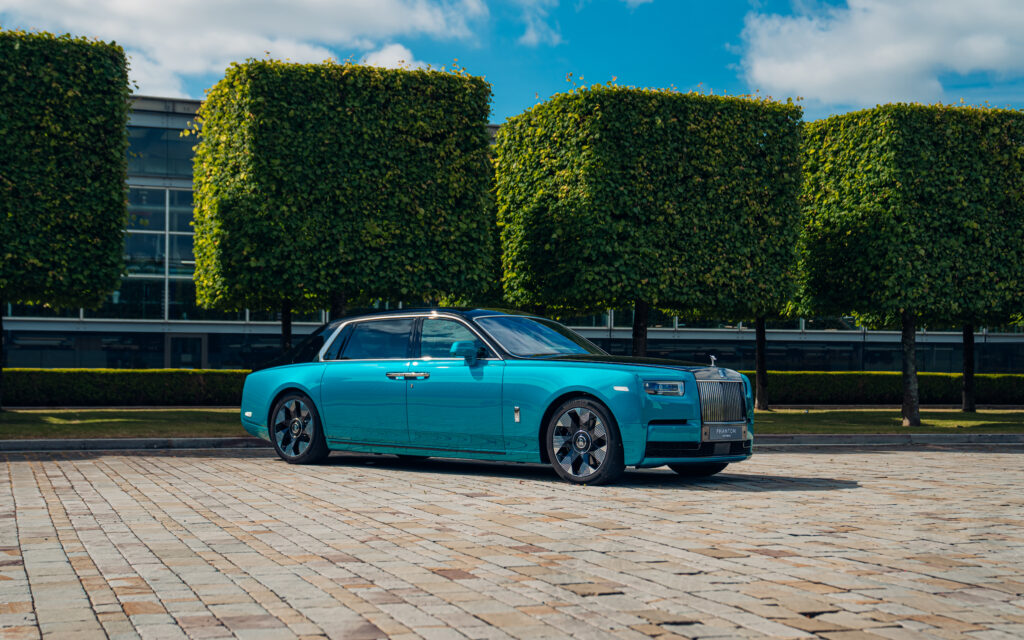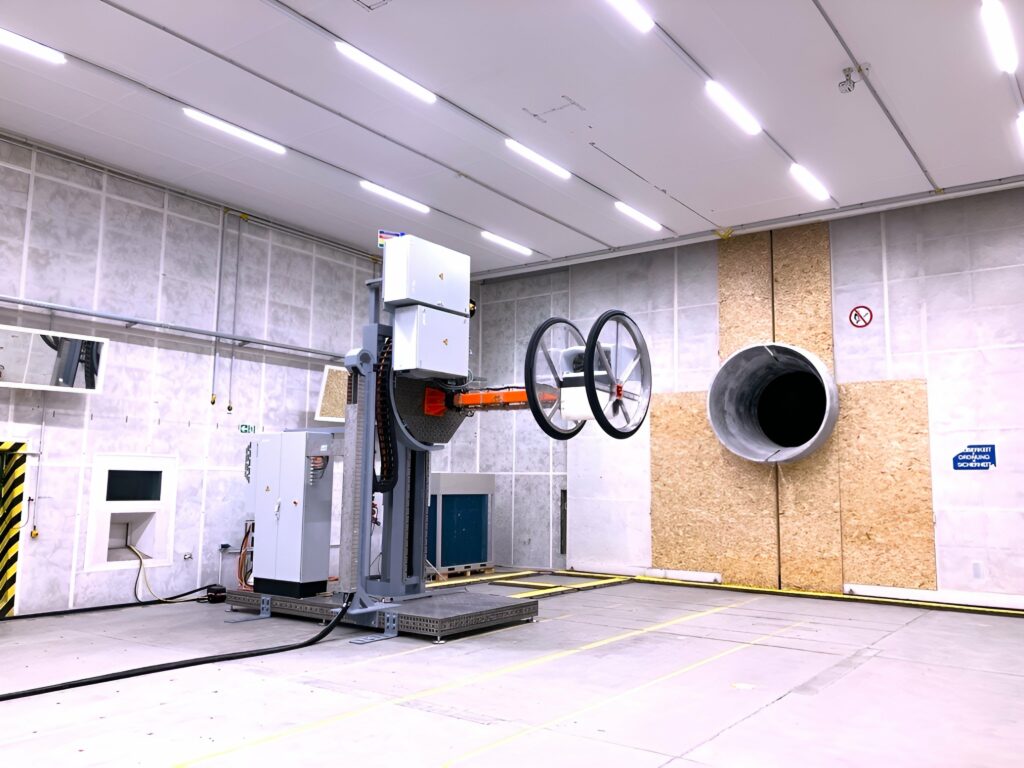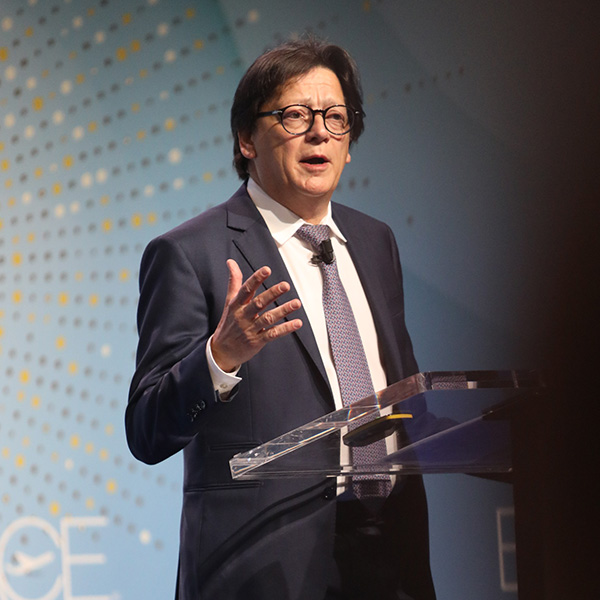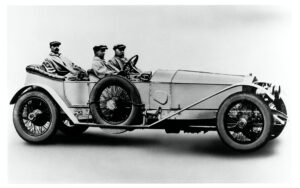ROLLS-ROYCE MOTOR CARS CELEBRATES BESPOKE AT FESTIVAL OF SPEED
Rolls-Royce Motor Cars celebrates a highly Bespoke presence at this year’s Festival of Speed. Displayed on the Festival’s Laundry Green, adjacent to Goodwood House, a beautifully commissioned Phantom Extended, Ghost, Spectre, as well as the latest expression of Cullinan, will each provide a unique expression of the marque’s peerless craftsmanship.

“The Festival of Speed, set in the remarkable grounds of the historic Goodwood Estate, is an important highlight in our annual calendar. It is the ultimate celebration of motorsport, located only a stone’s throw away from the marque’s headquarters in West Sussex. We are delighted to unveil a highly Bespoke collection of motor cars, which have been created especially for the occasion and exemplify the talent, creativity and ingenuity of our artisans, designers and engineers at Rolls-Royce. The latest iteration of our super-luxury SUV, Cullinan, will also make its UK public debut at the event. Alongside Cullinan Series II, we are proud to showcase Spectre, our all-electric super coupé, presented in a vivacious two-tone, as well as a highly Bespoke Phantom Extended and a unique expression of Ghost. We are looking forward to welcoming media, clients and our trusted dealer partners to the event.”
Boris Weletzky, Regional Director, United Kingdom, Europe and Central Asia
Rolls-Royce Motor Cars celebrates a highly Bespoke presence at this year’s Festival of Speed. Displayed on the Festival’s Laundry Green, adjacent to Goodwood House, a beautifully commissioned Phantom Extended, Ghost, Spectre, as well as the latest expression of Cullinan, will each provide a unique expression of the marque’s peerless craftsmanship.

ROLLS-ROYCE CULLINAN
When Cullinan first launched in 2018, it built a new legacy for Rolls-Royce Motor Cars, with a bold and uncompromising generation of super-luxury consumers. It reframed super-luxury motoring, enabling Rolls-Royce clients to experience the marque’s hallmark ‘magic carpet ride’ on any terrain and in every corner of the world.
Earlier this year, the marque unveiled Cullinan Series II, an evolution of the world’s pre-eminent super-luxury SUV. This motor car makes its UK public debut at the Festival of Speed 2024.
One of the key themes in Cullinan’s evolution is verticality, which echoes the illuminated skyscrapers in the megacities where Cullinan is increasingly at home. This is perhaps most apparent in the new lamp treatment, where tall daytime running light graphics ensure Cullinan Series II is easily identified, day and night.
The marque’s signature figurine, the Spirit of Ecstasy, features inside the motor car for the very first time and is displayed in miniature inside the new Clock Cabinet in the fascia. This unique inset vitrine displays both an analogue timepiece and the up-lit Spirit of Ecstasy figurine. Constructed from solid stainless steel, the Spirit of Ecstasy is placed on her own stage with a matte black back panel and high gloss side panels to create a reflection effect.
Cullinan Series II illustrates the extensive scope of the marque’s Bespoke capabilities and talented craftsmanship. For the first time ever on a series car, Placed Perforation, the practice of creating artworks through tiny perforations in the leather, is available. Designers at the marque’s headquarters created a pattern inspired by the constantly changing shapes and shadows of the clouds over the Home of Rolls-Royce.Cullinan Series II also continues Rolls-Royce’s exploration of textiles with a new rayon fabric made from bamboo, named Duality Twill.
A contemporary expression of Cullinan, finished in a minimalist yet sophisticated hue, Emperador Truffle, will be on show at the event. Inspired by richly-veined brown marble, Rolls-Royce colour specialists developed this unique paint finish especially for Cullinan Series II. An Arctic White Coachline provides a clean contrast to the exterior hue. Inside, the elegant yet minimalist style continues, with a Cashmere Grey and Chartreuse leather colourway, the latter with the intricate Placed Perforation pattern.

ROLLS-ROYCE SPECTRE
2023 was a momentous year for Rolls-Royce Motor Cars; it marked 20 years since production began at the marque’s Goodwood manufacturing facility and, in Q4 of 2023, client deliveries for Spectre, the marque’s first fully electric motor car, began. Since then, Spectre has been on a remarkable Bespoke journey.
For this year’s Festival of Speed, a striking expression of the marque’s electric super coupé has been created. Presented in two-tone Peony Pearl and Black Diamond, this vibrant expression of the marque’s genre-defining motor car exudes modern luxury and symbolises the dawn of a bold new era for Rolls-Royce. To embolden the exterior and highlight Spectre’s dynamic presence and prowess, 23-inch wheels are fitted to the motor car. The exterior is completed with a trim, Black Coachline. Peony Pink and Arctic White are the primary and secondary interior colours chosen to complement the exterior.
The interior cabin is a celestial cosseting haven, with a spellbinding Starlight Headliner, Starlight Doors, which incorporate 4,796 softly illuminated ‘stars’, and a tone-on-tone starlight pattern on the rear waterfall seat. An extra special clock vitrine, delicately embellished with shooting ‘stars’, creates a serene yet magical essence.
This year marks the 120th anniversary of the meeting of The Hon. Charles Stewart Rolls and Henry Royce and, in a gentle nod to commemorate this significant year, each of the one-of-one Phantom, Ghost and Spectre motor cars created for the event, features a painted ‘sound wave’ design on the lid of the centre console. Each ‘sound wave’ conveys a different inspirational quote from the marque’s founding fathers, whose vision underpins everything that the company is today and strives to achieve.
Bespoke is Rolls-Royce; an ethos which permeates every commissioned creation, from exquisite motor cars to luxurious accessories. This extends from glamorous cellarettes and champagne chests, to personalised umbrellas and picnic hampers. To complement the Peony Pearl Spectre, an elegant Escapism Luggage Collection has been designed and created. Beautiful in form, yet relaxed and contemporary, this luggage collection is crafted from the highest quality leather and durable canvas, ideal for those who travel for enriching experiences and spontaneous moments of discovery.
In addition to Spectre’s presence on the stand, this motor car will ascend the famous Hillclimb course at Goodwood during the Festival’s Supercar Run.

ROLLS-ROYCE PHANTOM
Phantom is an icon of legendary standing, which defines the barometers of luxury. A masterpiece of transcendent perfection, Phantom Extended offers tastemakers a serene and spacious realm to recharge before taking on the world. Its exquisite features and elevated nuances epitomise Rolls-Royce’s artisanship, solidifying it as an icon in the marque’s history.
For this year’s Festival of Speed, a modern interpretation of Rolls-Royce’s pinnacle motor car has been designed and created by the marque’s highly skilled designers, engineers and artisans. This magnificent expression is finished in a striking two-tone of Diba Teal and Black Diamond, with a Black Coachline. Inspiration for this motor car comes from the French Riviera, a location internationally renowned for its glamourous lifestyle, unrivalled views and stunning scenery. There is also a strong connection between the marque and the area; in 1912, Sir Henry Royce built Villa Mimosa in the village of Le Canadel, where he subsequently spent every winter until his death in 1933.
Phantom offers clients an unprecedented opportunity: a chance to showcase eclectic works of art, sculpture, or objects of self-expression in the Gallery. This unique single piece of uninterrupted glass, spans the entire fascia and means patrons can enjoy, admire and appreciate their favourite artwork from the sanctuary of Phantom’s sumptuous cabin. For this year’s commission, Rolls-Royce’s artisans spent over 35 hours creating a beautiful monochrome leather Gallery, with an embroidered wave pattern, which features 47,319 stitches. This pattern is once again a gentle nod to the French Riviera and is replicated throughout the motor car on the door card and picnic tables.
Innovation meets exquisite craftsmanship with the Kinetic Luggage Collection which complements the luxurious motor car. Presented in Black leather, with Arctic White panelling and Diba Teal stitching, the collection has been meticulously designed and crafted by Rolls-Royce’s talented artisans.

ROLLS-ROYCE GHOST
Ghost is a study in reduction, minimalism and simplicity. Its purity provides the ideal blank canvas for Bespoke commissions, with clients able to exercise their ambitious creativity and express their personal tastes almost entirely free of technical and aesthetic constraints.
That purity presents possibility. It creates potential as boundless as the owner’s imagination, emboldening them to bring colour, energy and vibrancy to their commission and to allow beautiful materials, expert craftsmanship and exquisite details speak for themselves, subtle and unadorned.
Presented in Blue Crystal over Black, the expression of Ghost created in honour of the occasion, oozes timeless elegance and sophistication. A Charles Blue Coachline elegantly resolves the exterior and illustrates the extensive scope of the marque’s Exterior Surface Centre.
Beautifully crafted leather Key Wraps have been designed and created for the Ghost, Phantom and Spectre.
CO2 EMISSIONS & CONSUMPTION.
- Spectre: WLTP: Power consumption: 2.6-2.8 mi/kWh / 23.6-22.2 kWh/100km. Electric range 329 mi / 530 km. NEDC: CO2 emissions 0 g/km.
- Phantom : NEDC combined: CO2 emissions: 345 g/km; Fuel consumption: 18.7 mpg / 15.1 l/100km. WLTP combined: CO2 emissions: 362-351 g/km; Fuel consumption: 17.7-18.2 mpg / 15.5-16.0 l/100km.
- Cullinan Series II: NEDCcorr (combined) CO2 emission: 348 g/km; Fuel consumption: 18.6 mpg / 15.2 l/100km. WLTP (combined) CO2 emission: 377-368 g/km; Fuel consumption: 17.1-17.5 mpg / 16.5-16.1 l/100km.
- Ghost: NEDCcorr (combined) CO2 emission: 343 g/km; Fuel consumption: 18.8 mpg / 15.0 l/100km. WLTP (combined) CO2 emission: 359-347 g/km; Fuel consumption: 17.9-18.6 mpg / 15.2-15.8 l/100km.
| Source: Rolls-Royce Motor Cars PressClub |











 A must-see for any visitor to Iceland, the Golden Circle is a popular tourist route that covers three iconic attractions: Thingvellir National Park, Geysir Geothermal Area, and Gullfoss Waterfall. Explore the historic site of Thingvellir, marvel at the erupting geysers of Geysir, and witness the powerful cascade of Gullfoss.
A must-see for any visitor to Iceland, the Golden Circle is a popular tourist route that covers three iconic attractions: Thingvellir National Park, Geysir Geothermal Area, and Gullfoss Waterfall. Explore the historic site of Thingvellir, marvel at the erupting geysers of Geysir, and witness the powerful cascade of Gullfoss.












